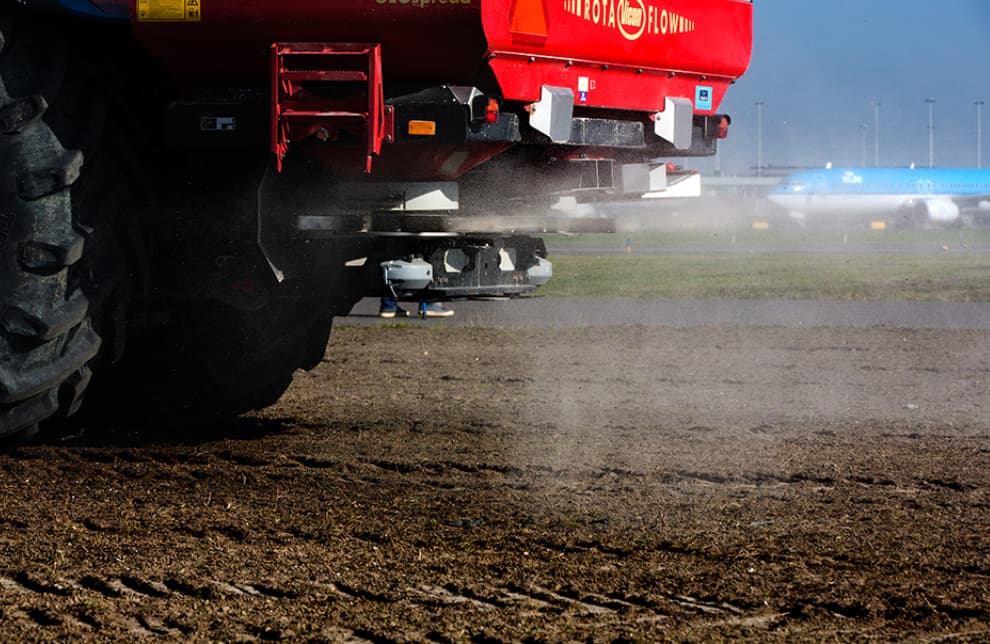Fertiliser pellets derived from waste water from aircrafts: Fertile waste water
One person's trash is another person's treasure – or in this case raw material. In this pilot we are developing fertiliser pellets using a phosphate mineral derived from waste water from aircrafts.

We want to use this pilot to reduce the environmental impact of waste water. Leon Bakuwel, Utilities Strategic Advisor: ‘We can't live without phosphate. It is essential for the growth of plants and therefore for the food supply, but our stocks of phosphate are finite.’
Rosanne Blijleven, Habitat Management Specialist: ‘The pellets help the grass stay healthy, which means weeds are kept under control. It's also a way to keep birds away. Returning the mineral to the ground is one of the final steps in the process of grassland improvement.’
How are these struvite pellets produced?
During the water purification process, bacteria gorge themselves on substances in the water. When the water is subsequently transferred to a sedimentation tank, the bacteria in the water fall to the bottom, forming a layer of sludge. The water above this sludge is clean and is drained off to the Ringvaart canal, while the sludge is transferred to a digestion tank. The water that is released during this stage is rich in phosphate and is pumped to a reactor where the struvite pellets are formed.
Making adjustments for the future
We could not have done this pilot without the cooperation of waste water purification partner Evides Industriewater, the Vewin water company association and KWR Watercycle Research Institute. ‘The reactor had to be installed next to the water purification plant for the pilot. Evides will soon be converting the water purification plant’, says Leon. ‘We are now in the preparatory phase and will decide later whether struvite production will become a permanent activity.’